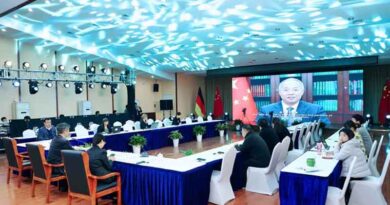Two new sites in Japan designated FAO Globally Important Agricultural Heritage Systems
18 July 2022, Rome: Two new sites in Japan – an inland fisheries and associated paddy farming system centred on the country’s largest lake and a traditional fruit-growing area believed to have been the birthplace of Japanese grape cultivation – have been formally recognized as Globally Important Agricultural Heritage Systems (GIAHS).
The two sites have been designated for their unique ways of using traditional practices and knowledge while maintaining unique biodiversity and ecosystems during a meeting of the GIAHS Scientific Advisory Group in Rome. The selection criteria stipulate that sites must be of global importance, have value as a public good, supporting food and livelihood security, agro-biodiversity, knowledge systems, social values and culture as well as outstanding landscapes.
FAO’s flagship GIAHS programme, which marks its 20th anniversary this year, is seen as a key tool for promoting sustainable agriculture and revitalizing and developing the distinctive features of rural communities.
To date, a total of 13 sites in Japan have been added to the global agricultural heritage systems list. FAO’s worldwide agricultural heritage network now consists of 67 systems in 22 countries around the globe.
Traditional fishery, farming and social system
The Biwa Lake to Land Integrated System, located close to Kyoto, Japan’s old capital, is centered on traditional inland water fisheries which have developed along with paddy agriculture, providing safe breeding grounds for spawning lake fish. Traditional fishing methods enable the selective catching of only a required amount of lake fish of a certain size. The area’s social system allows fishers’ organizations to autonomously conserve lake resources. This system has a history of more than 1,000 years that integrates agriculture and fisheries, and it has continued providing sustainable resource use in freshwater systems located in an area where urbanization has taken its course.
Lake Biwa is home to 47 native fish species, including sixteen endemic species. Lake fish such as the round crucian carp (carassius buergerigrandoculis) have migrated up the water channels to breed in the rice paddies that have been developed in the low wetlands surrounding the lake. People developed various passive fishing methods to catch migrating fish as they worked their fields, establishing an agro-fishery mixed livelihood that enhanced their food self-sustainability.
The system has faced various challenges, including population increase, urbanization, modernization of agriculture and damage from invasive alien fish species. However, after the 1970s, not only fisherfolk but also farmers, forestry workers, consumers and other diverse actors have joined forces to preserve and pass down the traditional approach to future generations.
Traditional fruit-growing area
The Kyoutou region in Yamanashi Prefecture is thought to be the birthplace of Japanese grape cultivation. Grapes have been grown there for at least 800 years, but many other fruits in this region also have a long history, including peaches, persimmons, ume (Japanese apricots), nashi pears, apples and chestnuts. The region has evolved a unique system of manual cultivation over its long fruit-growing history.
Most of its agricultural land is located on an alluvial fan with substantial slopes and undulations. Individual plots tend to be small and irregularly shaped, with a variety of soil and other conditions. Over the centuries, farmers have learned to grow the fruit trees that are best adapted to the local topography and climate. Many techniques have been developed to ensure stable fruit production on small plots. Of particular importance is the local grape cultivation method, in which thick, sparsely planted vines are trained over Koshu-style trellises, suspended high above the ground to counter the wet, humid conditions.
The way in which small-scale family farms are able to make a decent living by using small plots of land profitably through painstaking management techniques make the area a unique and outstanding agricultural system of global importance.
Also Read: World Food Prize Foundation Announces New Director of Communications















